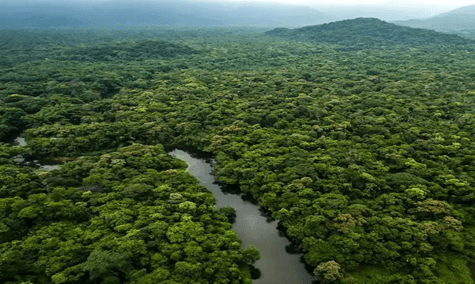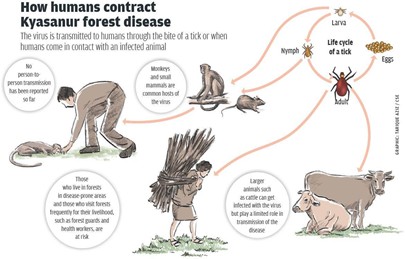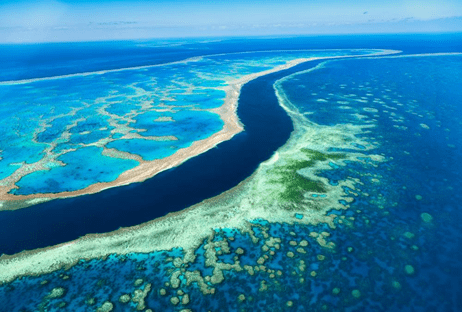Current Affairs Highlights (March 23, 2025)

WEEKLY FRESH UPS

Aravalli Green Wall Project – A Brief Overview
The Aravalli Green Wall Project, launched on March 25, 2023, is a major afforestation initiative by the Union Environment Ministry to combat land degradation and desertification in the Aravalli hill range, spanning Haryana, Rajasthan, Gujarat, and Delhi. Inspired by Africa’s Great Green Wall Project, it aims to restore 1.15 million hectares of degraded land by 2027.
Objectives:
- Increase green cover and biodiversity through afforestation.
- Act as a carbon sink to tackle air pollution.
- Prevent the eastward expansion of the Thar Desert.
- Improve groundwater recharge and soil fertility.
- Reduce the impact of climate change and dust storms.
- Provide livelihood opportunities in agroforestry.
Implementation & Cost:
- ₹7,500 crore budget: 78% from the Central Government, 20% from States, and 2% from Aid Agencies.
- The project covers 27 districts (18 in Rajasthan, 6 in Haryana, 3 in Gujarat, and Delhi).
- Focus on planting native trees, restoring water bodies, and developing pastures.
Challenges:
- 8% of Aravalli Hills lost (1975–2019), with increasing desertification and illegal quarrying.
- Forest cover declined by 32%, affecting flora & fauna like leopards and hyenas.
- Mining expansion, human settlements, and water depletion threaten sustainability.
This ambitious project, covering 11,500 sq. km, aligns with India’s goal of restoring 26 million hectares of degraded land and creating a 2.5-3 billion tonne carbon sink, significantly enhancing environmental resilience.

Kyasanur Forest Disease (Monkey Fever) – A Brief Overview
Kyasanur Forest Disease (KFD), also known as Monkey Fever, is a tick-borne viral hemorrhagic fever endemic to Karnataka, Kerala, and Tamil Nadu. It is caused by the Kyasanur Forest Disease Virus (KFDV), belonging to the Flaviviridae family, and is transmitted through bites from infected hard ticks (Hemaphysalis spinigera).
Symptoms:
- High fever, severe headache, chills, muscle pain, vomiting.
- Bleeding complications may arise 3-4 days after initial symptoms.
- Some patients (10-20%) experience a second wave of symptoms, including mental disturbance, tremors, and vision problems.
Risk Factors & Transmission:
- Primarily affects hunters, farmers, herders, and forest workers due to exposure to infected ticks.
- Infection risk is higher during the dry season (November to June).
- No human-to-human transmission; spreads through tick bites or contact with infected animals (monkeys, rodents, livestock).
- Fatality rate: 3-15%.
Recent Developments:
- In Karnataka (2024), 95 cases were reported, with Chikkamagaluru (51 cases) and Shivamogga (43 cases) being the worst affected.
- A new KFD vaccine is expected by 2026, being developed by Indian Immunologicals (Hyderabad) under ICMR guidance.
KFD remains a serious health concern, requiring tick control measures, early diagnosis, and vaccination efforts to reduce its impact.

Great Barrier Reef
The Great Barrier Reef (GBR) is the world’s largest coral reef system, spanning 2,300 km off the coast of Queensland, Australia, and covering 344,400 sq. km. It consists of 2,900 individual reefs and 900 islands and was designated a UNESCO World Heritage Site in 1981.
Significance:
- It is the largest living structure on Earth, supporting diverse marine life.
- Recognized as one of the Seven Natural Wonders of the World (CNN, 1997).
- Plays a vital role in Aboriginal and Torres Strait Islander culture.
- A major tourism attraction, especially in the Whitsunday Islands and Cairns regions.
Environmental Threats:
- Climate Change & Coral Bleaching: Rising ocean temperatures have led to mass bleaching events.
- Pollution & Runoff: Fertilizers containing nitrogen, phosphorus, and potassium harm marine life.
- Crown-of-Thorns Starfish: A coral-eating species causing large-scale reef destruction.
- Overfishing, Oil Spills, and Cyclones further threaten the reef’s ecosystem.
The GBR remains a critical marine ecosystem, but climate change, human activities, and natural disasters continue to pose significant challenges to its survival.
Recent Posts
Archives
- April 2025 (12)
- March 2025 (4)
- January 2025 (1)
- December 2024 (17)
- November 2024 (30)
- September 2024 (1)
- August 2024 (1)
- June 2024 (2)
- May 2024 (1)
